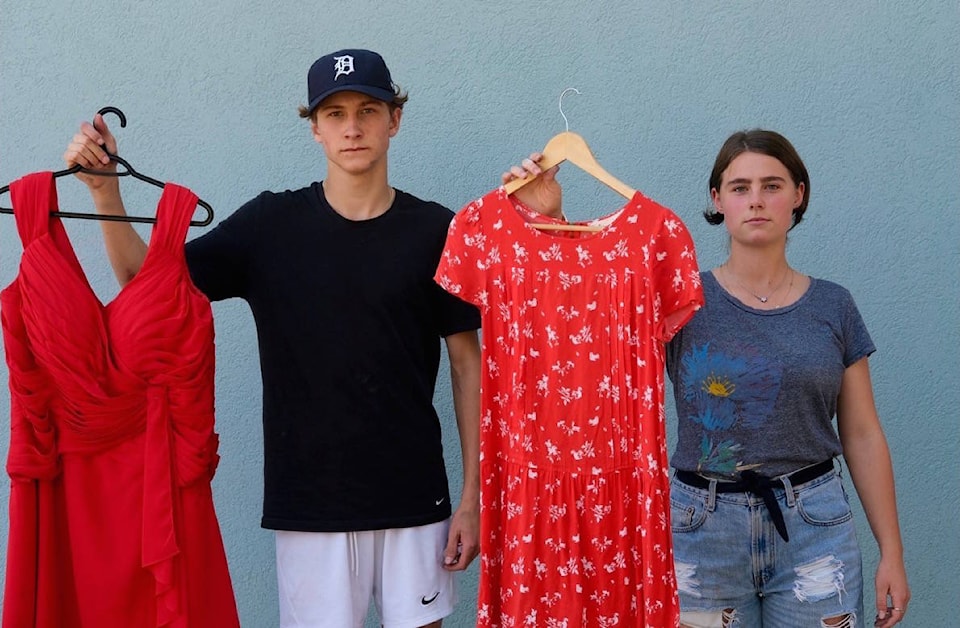When L.V.Rogers art teacher Laurryn Asbell heard about the discovery of Indigenous children’s graves in Kamloops, she decided on a student project that would happen in small parts.
“Collecting and processing grief in small parts is much more impactful than doing all of it in a one-time talk about what happened at that school,” she says.
The four small parts were feathers, stones, poems, and red dresses, all compiled, gathered and discussed, then arranged in an installation case in the school hallway.
“How do you represent 215 people? We have a class of 20, and 215 is such a large number,” says Asbell. “So we started to bring stones back to the classroom, and started to build this amount of 215 stones and collected them on a table.”
They arranged them in various ways, discussed them, and wrote on some of them.
“The students described the stones, they described the gaps in the spaces between them, some students collected them together in families of stones, talked about how they are like gravestone markers in a way.”
And they discussed how this project is perhaps not yet complete because there may be more graves discovered at other schools – as there have been since the completion of the project.

Asbell says the job of an artist is to turn over every stone, and this describes her process with the stones and students in her art class.
“Carefully inspecting what’s happening currently in this moment by looking around, from all edges and all sides, and being careful with what we do with that stone. I think that’s what that means for me.”
The students each made a drawing of an eagle feather, studied its details carefully, then wrote on the back of their drawing one thing they could do to further reconciliation, then hung them in the exhibit.

Some examples of their written commitments were, “I can hear those stories,” “I can educate myself,” “I can be a good friend.”
The students also each created a poem using a technique called blackout poems, using selected words in a page of a found book.
Student Mandolin Martin helped Asbell organize the exhibit. She and other students went to city hall and visited the exhibit of red dresses that commemorate missing and murdered Indigenous women.
“There was a little bit of wind that just made it look like there were spirits there,” she says.
Asbell brought some red dresses to the school and hung them up as part of the project and the students drew them.
“Immediately after putting all the lights underneath the dresses,” Martin says, “creating the shadows and everything, it felt like their presence was there.”

Student Dylan Moynes says he did not know much about Indigenous issues before this project.
“After you see how many red dresses, and how many rocks we had to collect, it really made me realize that there actually is 215 kids that have been found under that school, buried, and how many missing and murdered Indigenous women there actually are. Previous to this, I didn’t know how big of a problem it was.”
Asbell says she wondered if she, being non-Indigenous, was the right person to be heading this project.
“Then I thought, we all have this responsibility. We’ve been learning about reconciliation for a long time. This isn’t brand new. We have the information, we have the support in the schools. We need to do it.”
bill.metcalfe@nelsonstar.com
Like us on Facebook and follow us on Twitter
